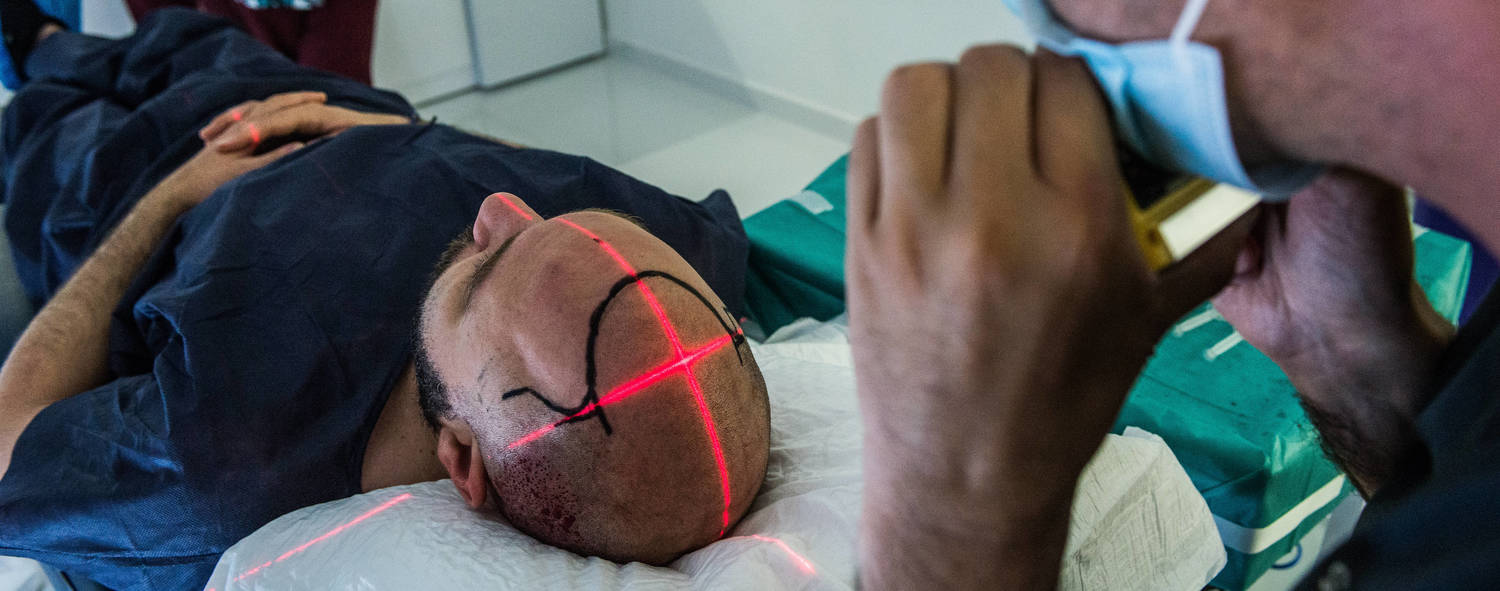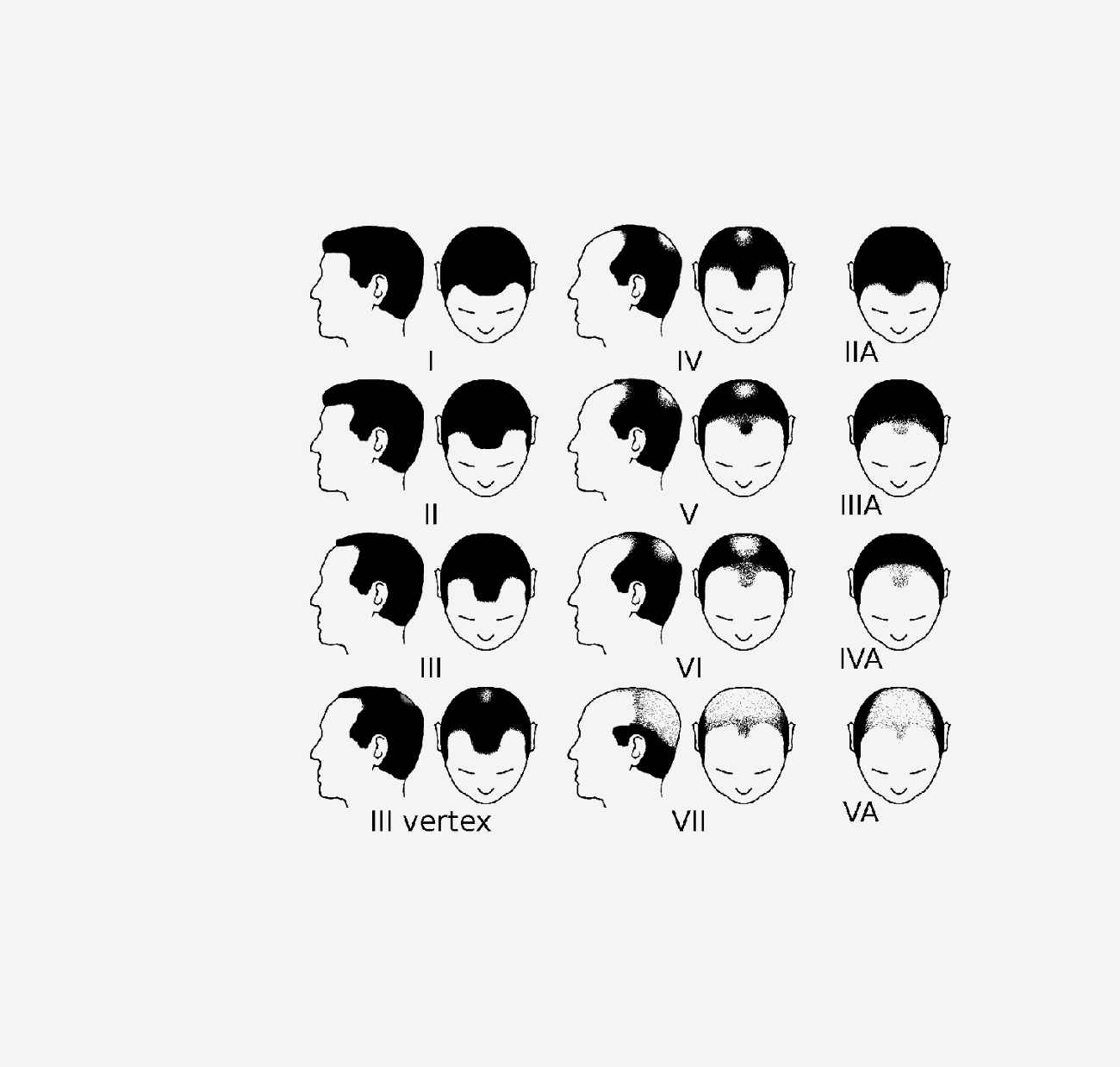Hair Loss Treatment
Hair Loss Treatment
Hair loss can be stopped and reversed.

Also suitable for
Powerful Hair Loss Treatments
Personalized Pharmaceutical Care
The treatment blocks the formation of dihydrotestosterone (DHT), the hormone that causes hair follicles to shrink and ultimately stop hair growth. It can stabilize hair loss and even make hair thicker when used early. It benefits both men and women, and most products are available over-the-counter.
Our clinic team will explain the pros and cons of using medication for hair loss and advise you on the best products and habits to maintain the health of your scalp and hair.
PRP (Platelet Rich Plasma)
It is a type of "biotherapy" that uses your body's own healing and repair ability. This is why it is preferred by people who want to avoid pharmaceutical products or use it in addition to another hair loss treatment.
PRP therapy is a modern treatment option for hair loss. However, it has been widely used for joint conditions and facial rejuvenation, and many studies investigating PPR have been published in peer-reviewed scientific journals. It has been shown to be a very safe treatment and, although each patient’s response will be different, we are seeing very encouraging results in treating hair loss.
Skin micropigmentation
Creating very small dots of ink on your scalp, with a color carefully chosen to match your hair color, can give you the appearance of much fuller hair, as the color difference between your scalp and your hair is reduced.
Some people use this technique to achieve the “shaven” look, while others use it to reduce the areas where their hair thinning is visible. The STP method is also great for covering previous scars from FUT or FUE hair transplants, allowing you to have even shorter hair.
Hair Transplant
Hair transplantation is the most effective method of treating hair loss. Modern techniques offer a perfect aesthetic result characterized by its naturalness and density. The tools are now microscopic and leave no marks, while at the same time ensuring the naturalness of the new hair.
The result of hair transplantation always depends on the Scientific training and Aesthetic ability of the Surgeon. For this reason, at THE ANTIAGERS Regrow clinics the operation is always performed by a Plastic Surgeon.
Hair loss & treatment: All the information
Male pattern hair loss
Male pattern baldness is more likely to affect men with a family history of hair loss. As boys reach puberty, testosterone levels increase, including a derivative of testosterone called dihydrotestosterone (DHT). Some men are genetically predisposed to be more sensitive to DHT. As a result, the growth phase in the hair follicle's life cycle (anagen phase) becomes shorter, while the resting phase (telogen phase) becomes longer. Hair follicles shrink, hair becomes thinner, and eventually, hair cannot grow at all.
Shrunken hair follicles can remain alive for years, meaning that non-surgical treatments can slow or even reverse the effects of hair loss if applied early. But once hair follicles are dormant, hair regrowth is not possible and more advanced surgical techniques will be needed to restore hair.
The Norwood scale for male pattern hair loss
Male pattern baldness manifests itself in predictable ways. The hair on the sides and back of the head (the “safe donor zone”) usually continues to grow throughout life, while hair loss almost always begins at the temples and continues to the top of the head, leaving a “halo” of hair that eventually recedes and results in complete hair loss on the top and front of the scalp.
The Norwood scale was developed by Dr. O'Tar Norwood to determine the degree of progression of this process in men. Although the pattern is predictable, the rate of hair loss among different men varies considerably. Some men may reach stage II or III in their twenties and then remain at around that stage for decades, while others may not experience noticeable hair loss until middle age and then their hair loss progresses rapidly to stage VI or VII.

Treatment of male pattern hair loss
Despite the fact that this is a very common condition, the psychological consequences of hair loss can be serious, affecting self-confidence, self-esteem, or even interpersonal relationships and careers.
Seeking treatment for male pattern hair loss is completely normal, and today's pharmaceutical and surgical methods can guarantee successful treatment of the effects of hair loss. Non-surgical techniques allow men to have normal hair for many more years than they would have if they had let the condition take its natural course, while surgical methods can offer permanent solutions.
The earliest stage of male pattern hair loss that is usually suitable for treatment is stage III on the Norwood scale, when there is noticeable loss at the temples. However, modern techniques, such as those applied at our clinic, guarantee excellent results even when hair loss is much more advanced.
The best candidates for hair transplant surgery are usually people who have stabilized their hair loss with medication, such as finasteride or minoxidil. Otherwise, restoring hair to the growing areas of hair loss can be difficult due to the limited number of donor hairs available.
Female hair loss
Female pattern hair loss, also called hormonal hair loss or androgenetic alopecia, is a particularly common condition, as it affects 30% of the female population at some stage of life.
While male pattern hair loss primarily affects the frontal area of the scalp, the temples and the crown of the head, in women hair loss is in most cases more scattered throughout the central part of the head, behind the frontal area of the scalp, where hair is preserved.
In women, hair loss can be related to many different factors, such as genetic predisposition, abnormal hormone levels, some underlying medical conditions, stress or even diet. Therefore, it is very important to undergo a detailed evaluation to identify and treat the associated medical conditions. This alone may reverse the hair loss, but if it is not achieved, stabilization of the hair loss may allow us to consider hair transplant surgery in suitable patients with a sufficient number of hairs in the donor areas.
Our highly sophisticated follicular unit transplantation techniques enable us to perform transplantation between existing fine hairs to achieve significant change in suitable candidates.
Unfortunately, many women with diffuse thinning, such as female pattern hair loss, are not suitable candidates for hair transplant surgery, as there is a risk of continued thinning after surgery or even accelerated hair loss due to the surgery.
At our clinic, we offer a full range of treatments for female hair loss, such as medication, PRP therapy with platelet-rich plasma, and surgery.
The Savin scale
The Savin Scale was developed in 1996 by Dr. Savin at Yale University. It is a visual scale of hair loss pattern and hair density for women with hair loss determined by a thinning pattern.
Image I-1 shows the central parting in a woman without hair loss. In images I-2 to 1-4 the thickness of the parting becomes progressively greater.
Images II-1 and II-2 show diffuse thinning on the upper part of the scalp.
Image III shows extensive, diffuse hair loss on the top of the scalp, with some remaining hair, while the image of the “advanced” stage shows extensive hair loss with no hair at all in this area.
The image of the frontal area shows hair loss in the front and central part of the head and not just in the middle of the scalp.
